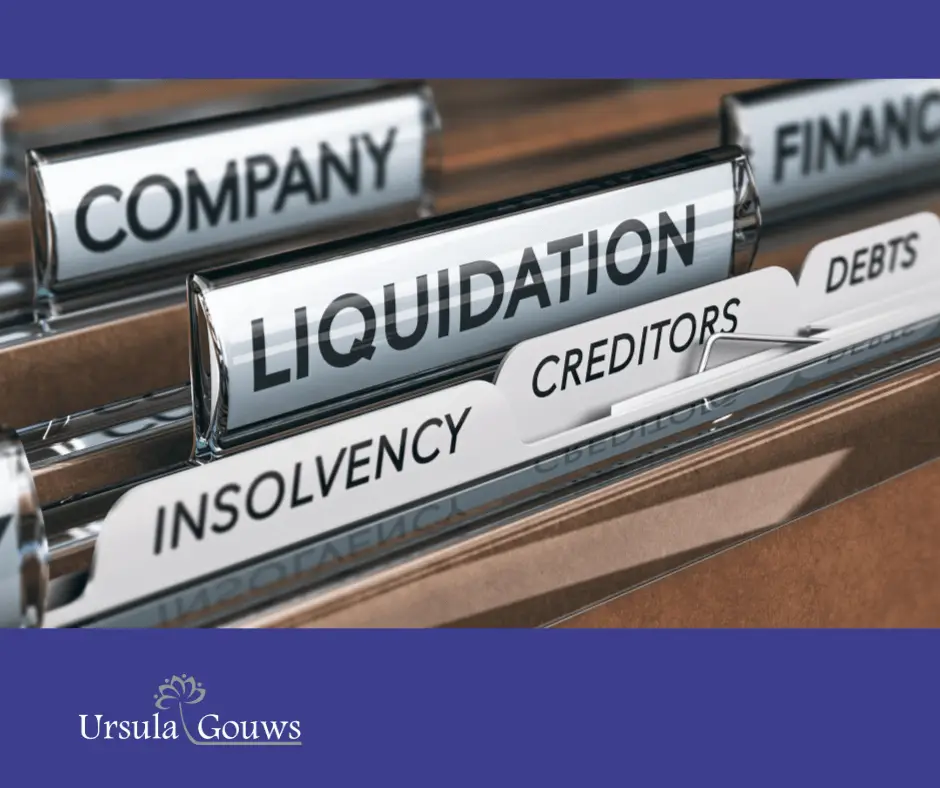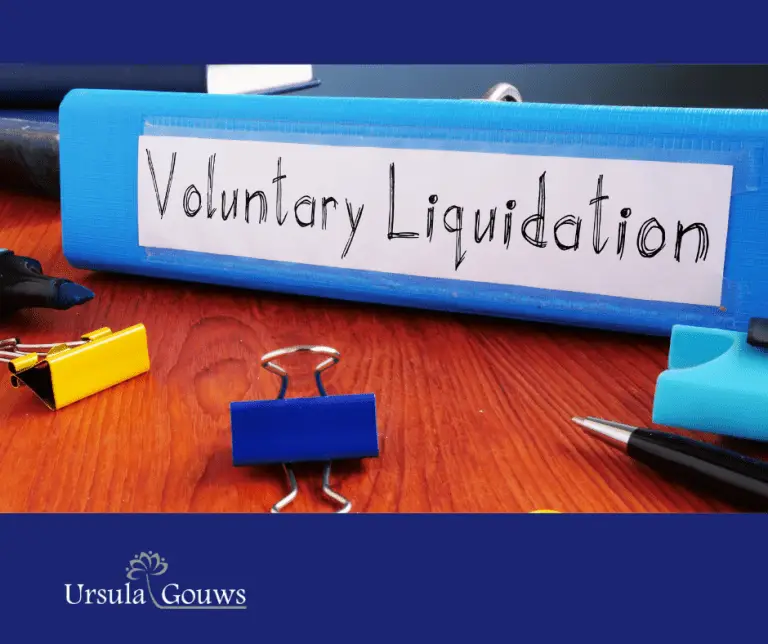Are you a business owner facing financial hardship and considering business liquidation in South Africa?
You are not alone.
Many businesses encounter financial difficulties, and sometimes, business liquidation becomes the most viable option.
While the process may feel daunting, understanding the steps involved can help ease the stress and ensure you are fully prepared to take the right action for your circumstances.
This blog provides a straightforward overview of the business liquidation process in South Africa, as outlined by the Companies Act.
By understanding each stage, you will be better equipped to make informed decisions about your business’s future.
What Is Business Liquidation in South Africa?
Business liquidation, often referred to as “winding up,” is the process of legally closing a business and distributing its assets to settle outstanding debts.
Once the process is complete, the business is deregistered and ceases to exist.
The Business Liquidation Process in South Africa
The Companies Act governs the business liquidation process in South Africa.
Below, we walk you through the key steps involved:
1. Directors’ Resolution
The first step involves the company’s directors passing a resolution to wind up the business and appointing a liquidator.
This resolution signals the official beginning of the liquidation process.
The appointed liquidator will oversee the process, handling the company’s assets and responsibilities.
2. Notice to CIPC
Within five business days of the resolution, the liquidator must notify the Companies and Intellectual Property Commission (CIPC) about the company’s liquidation.
This step formalizes the start of the process and ensures transparency.
3. Liquidator Process
Once appointed, the liquidator assumes control of the company’s assets and takes steps to realize their value.
This includes:
- Selling the assets.
- Distributing the funds to creditors based on the company’s financial obligations.
4. Creditors’ Meeting
A creditors’ meeting is convened to:
- Approve the appointment of the liquidator.
- Discuss and consider proposals for the distribution of the company’s assets.
This meeting ensures that creditors have a say in the liquidation process and helps maintain accountability.
During this stage, the liquidator may investigate the company’s financial affairs and report any irregularities to the creditors.
5. Final Meeting
After the liquidation process is complete, the liquidator organizes a final meeting with the creditors.
This meeting typically includes:
- A report detailing the asset distribution.
- Discussion of any outstanding issues or unresolved questions.
It serves as the closing chapter of the liquidation process before the company is formally deregistered.
6. Deregistration
Once all steps are completed and creditors are satisfied, the liquidator submits an application to the CIPC to deregister the company.
When the deregistration is approved, the company ceases to exist as a legal entity.
Challenges and Considerations
The liquidation process is complex and can carry significant financial and legal consequences for company directors and shareholders.
It is crucial to understand the following:
Director’s Liability:
- Directors’ actions leading up to the liquidation may come under scrutiny during the process.
Time and Resources:
- Liquidation is often a time-intensive process that requires thorough planning and execution.
Impact on Reputation:
- Liquidation can affect your professional reputation and future business endeavors.
For these reasons, seeking professional advice from a Debt Strategist is critical to navigating the liquidation process effectively and understanding its potential consequences.
The Emotional Side of Liquidation
Feeling overwhelmed, uncertain, or even emotional about the decision to liquidate your business is natural.
After all, businesses are often built on dreams, hard work, and dedication.
However, it is important to recognize that liquidation is not the end—it is an opportunity for a fresh start.
Remember, seeking support is not a sign of failure but a strategic step toward regaining stability and control.
Final Thoughts
Liquidating your business is undoubtedly a challenging process.
However, with the right support and understanding of the steps involved, you can approach it with confidence and clarity.
Remember that financial hardship is a shared experience, and many businesses have come out the other side stronger for it.
If you are feeling overwhelmed or uncertain about moving forward, don’t hesitate to get help.
You don’t have to face this on your own.
Take the first step toward a smoother, stress-free liquidation process today.
Together, we can help you move forward.
Reach out to our Debt Strategist today for personalized advice tailored to your unique situation.
Taking action now could make all the difference for your financial well-being and peace of mind.
This blog was brought to you by Ursula Gouws.
This blog is for information purposes only and does not constitute legal or financial advice.
If you enjoyed this blog, check out more Debt Talk with Ursula on the Ursula Gouws Consulting Blog, or download our Freebies to help you on your journey to a new financial future.
I am a Debt Strategist. Let me help you find the ideal legal solution for your unique debt situation.
I understand that dealing with financial distress can bring about feelings of guilt and shame, and even depression.
Rest assured – working together, we will get you back on track, so your finances and dignity are fully restored.
If you need help finding the ideal legal solution for your debt, feel free to reach out with the contact form on my Website.







